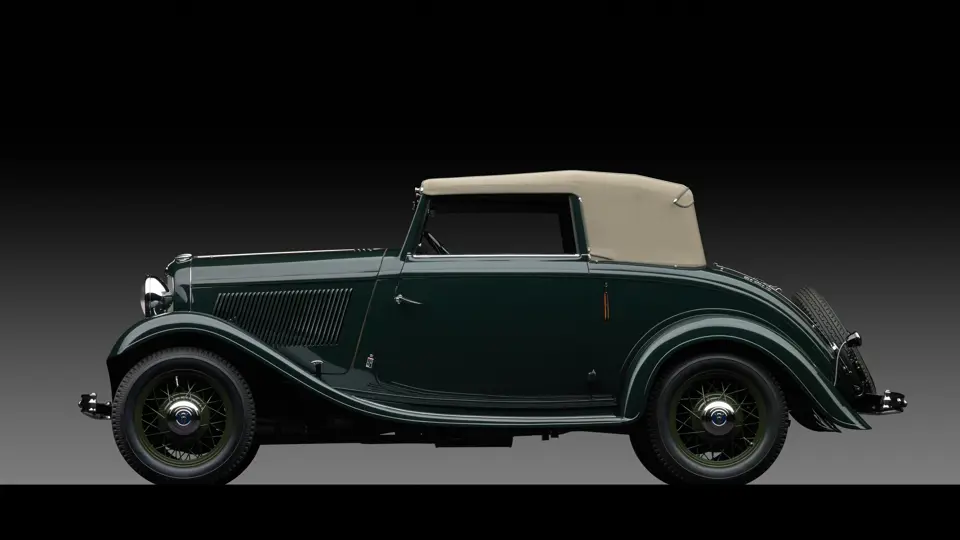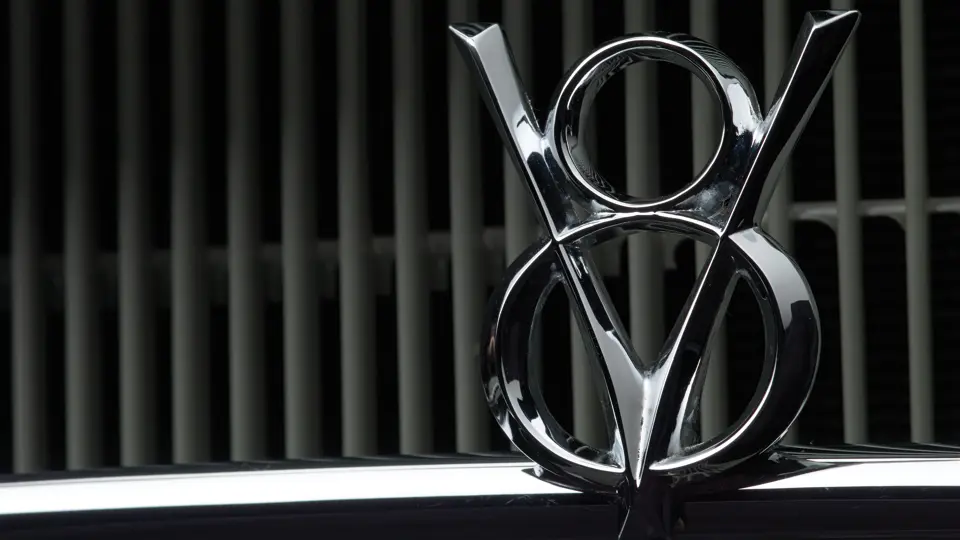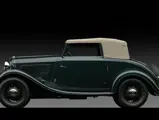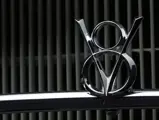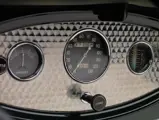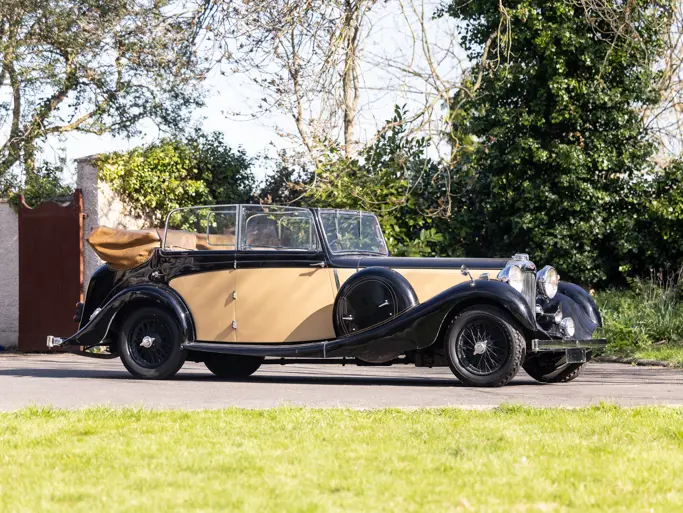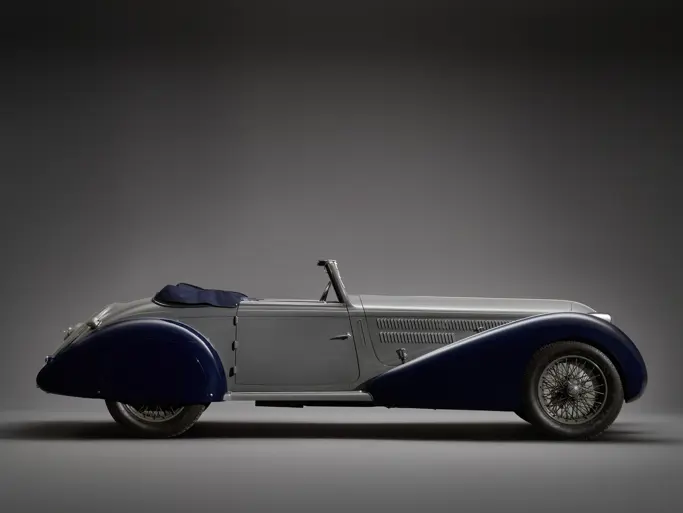Americans have always looked to Europe for design and artistic brilliance. Even in the 1930s, when the United States’ own coachbuilders and design studios were turning out sleek objects of desire, those same designers would travel overseas to absorb that certain, unmistakable élan. Italian designs, in particular, were light, sporting, and spirited, with a feisty personality all their own. That has never been more true than with the lines created by the Farina family in Turin, particularly Battista “Pinin” Farina.
Farina began at his brother’s shop, Stabilimenti Farina, but broke off on his own in 1928. “Pinin,” the youngest of the family, soon built himself a stature that defied his years, beginning with a Lancia shown in 1930 and continuing with a one-off Cadillac V-16 for an Indian maharajah. By 1932, four years after its founding and two years after its first body was beaten into shape, Pinin Farina had already achieved such fame that it was being noticed across the Atlantic.
The car offered here is believed to be the only Classic Era Ford built with custom coachwork by Pinin Farina. As the story is told, Ford Motor Company commissioned this car from the Italian coachbuilder as a styling study when they were considering options for the production 1933 Fords. Beautifully crafted on the iconic and American-built 1932 Ford Model 18 chassis, its design shows the influence of Pinin Farina’s earlier Lancias, with a sweeping beltline and smartly tailored roof, yet it also clearly mimics the production Ford bodies from Dearborn. It is clear to the casual observer that Pinin Farina wanted to see its styling carried out by the River Rouge. While that was fated not to happen, it would have been a beautiful thing.
Some five decades later, photographs of a unique Ford in Turin landed on the desk of a prominent American enthusiast. As he recently recalled, several years passed before he next heard of the car, by which time it had been acquired by Sergio Franchi. Franchi was one of the most famous enthusiasts of his era, as he was a passionate collector whose hobby became a well-known part of his public persona. At the time, he resided on Wilshire Boulevard in Los Angeles, and the gems of his collection, the Ford among them, were stored in the garage beneath his building. It was here that the American enthusiast finally came face-to-face with the Pinin Farina Ford, and he was able to acquire it for his own collection.
At the time, the Ford was in magnificently preserved, original condition, as photographs included in the file attest. It remained a part of his collection for some two decades before the consignor, a longtime friend, requested to purchase the car, with the hope of restoring it for an upcoming class of custom-bodied Fords at the Pebble Beach Concours d’Elegance in 2003. Knowing that his friend would do the beautiful Ford justice, the enthusiast owner parted with the car, and it was beautifully restored.
The work performed on this Ford is particularly outstanding. The restorer confirmed the car’s excellent original condition upon its arrival at his shop; almost all the hardware throughout is original and restored, as are all of the body panels. What could not be repaired was expertly crafted, using original parts as patterns and photographs of similar Pinin Farina coachwork on other chassis. The body was beautifully finished in a rich, dark green, with matching leather in a simple flat design over the chrome-framed individual front and rear bench seats. Overseeing all is a tan fabric top. The wire wheels are finished in a lighter green and shod in blackwall tires, which are both period-correct and a nod to this Ford’s distinctive European origins. These are the same colors and equipment that the car was fitted with originally.
The result of such glamour was that this car was, once again, the hit of the show. It was shown, as intended, in the Custom-Bodied Ford V-8 Class at Pebble Beach in 2003, and it won Best of Class, an astounding achievement. It was also shown in Antique Automobile Club of America competition, and in addition to achieving Grand National status, it was nominated for a National Award in the 2003 season. Later, it was displayed in 2008 and 2009 within the halls of the AACA Museum at Hershey, Pennsylvania. The result is an unparalleled level of achievement for a V-8 Ford, yet the car is also welcome to be shown at a variety of concours at which it has not yet appeared, and at which it will certainly continue to be a contender for major awards.
European design has always moved the world. In 1932, it even inspired the world’s foremost automaker. This car is that inspiration, presented with all the power that it had over eighty years ago.
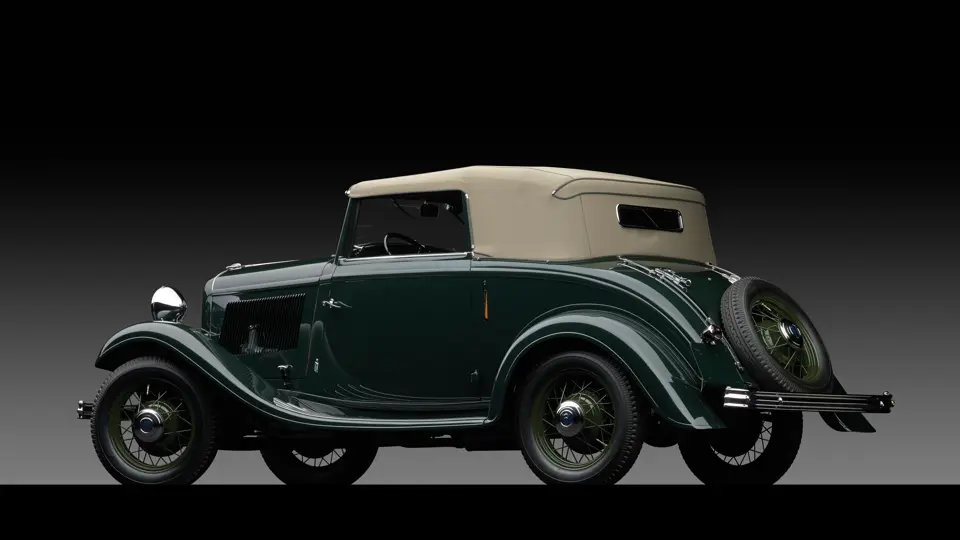
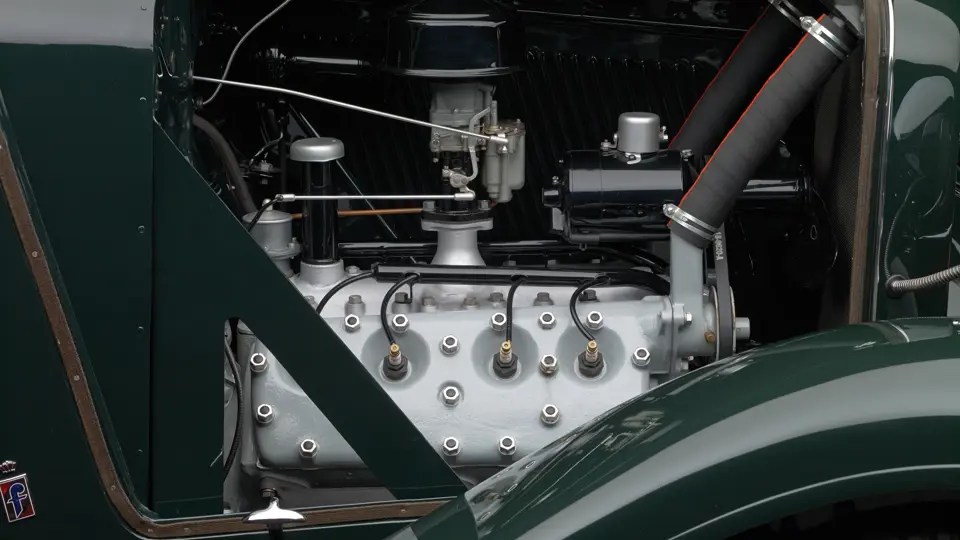
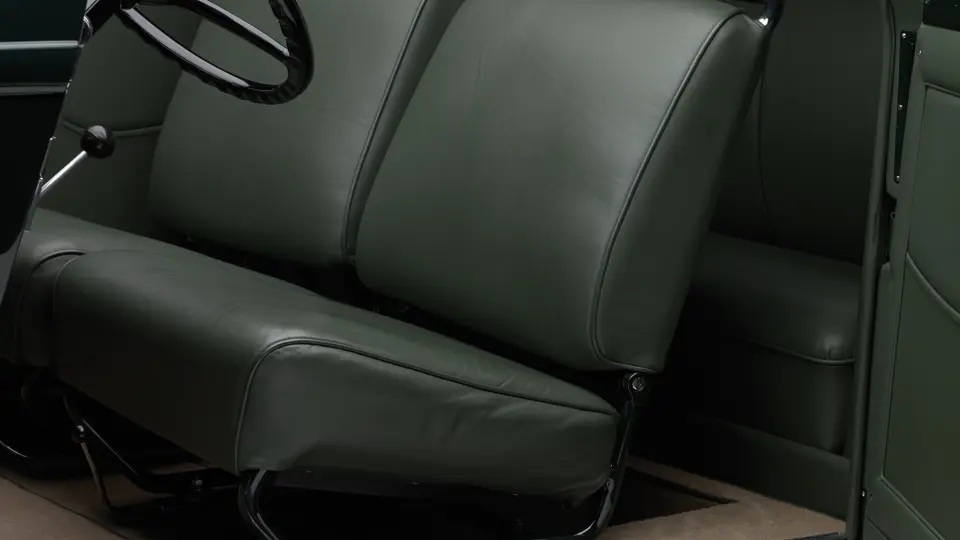

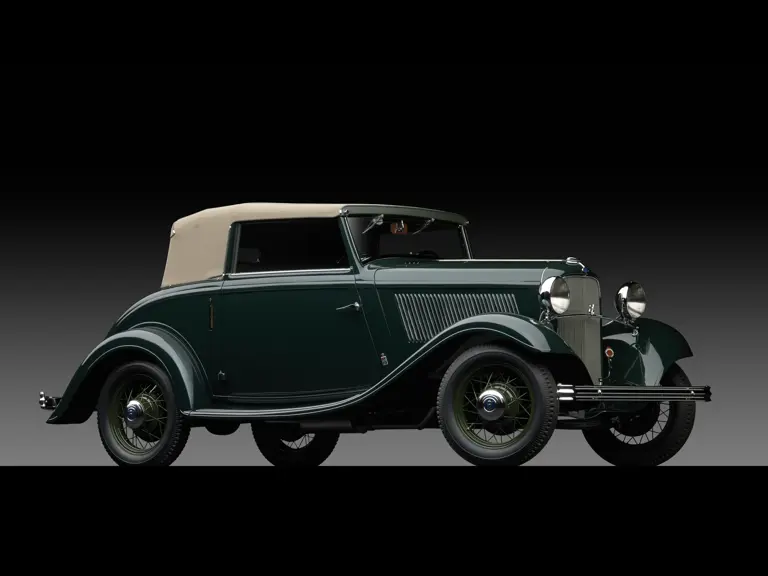
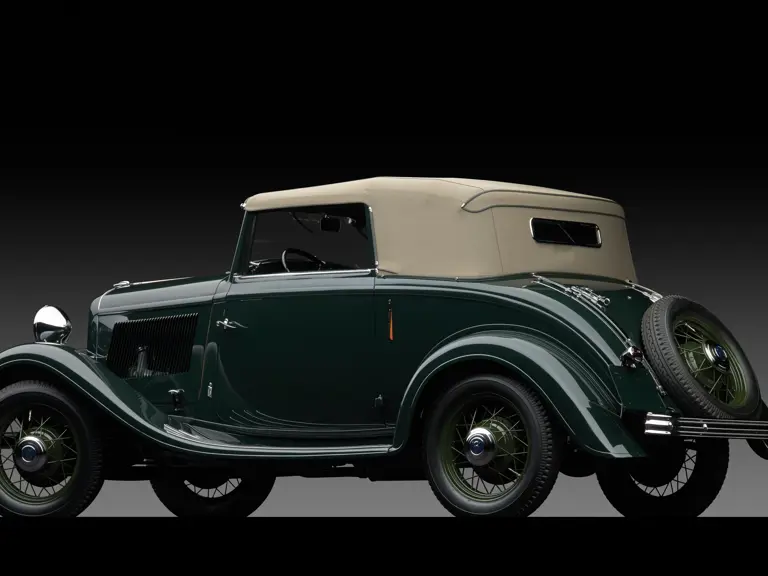
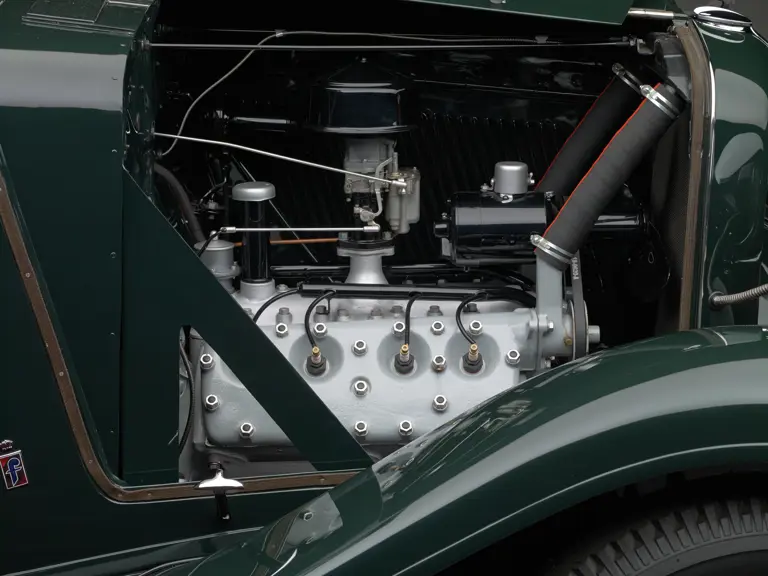

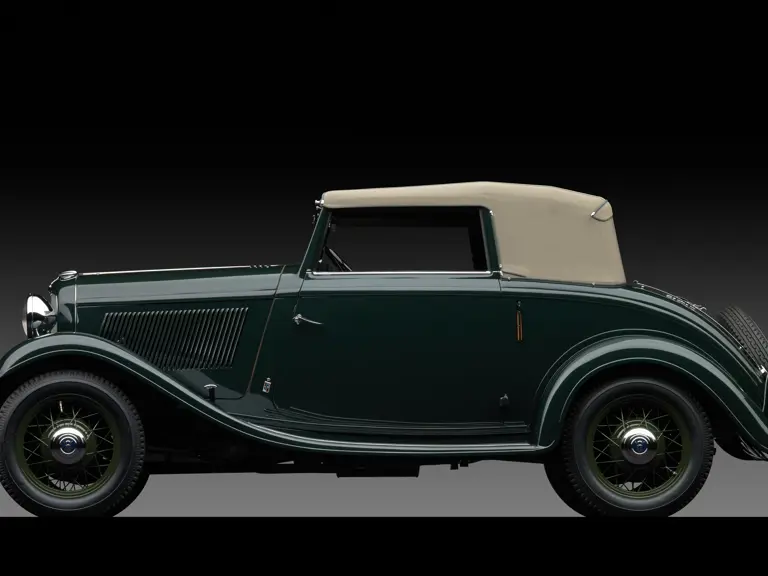
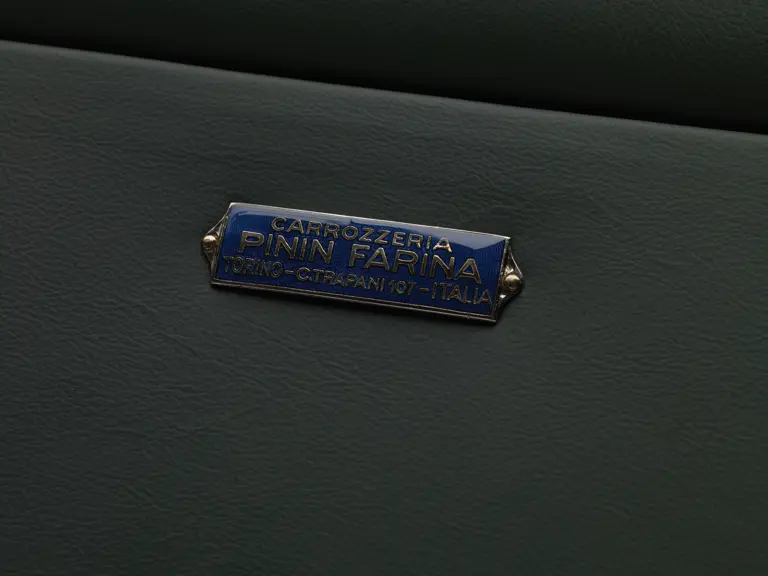
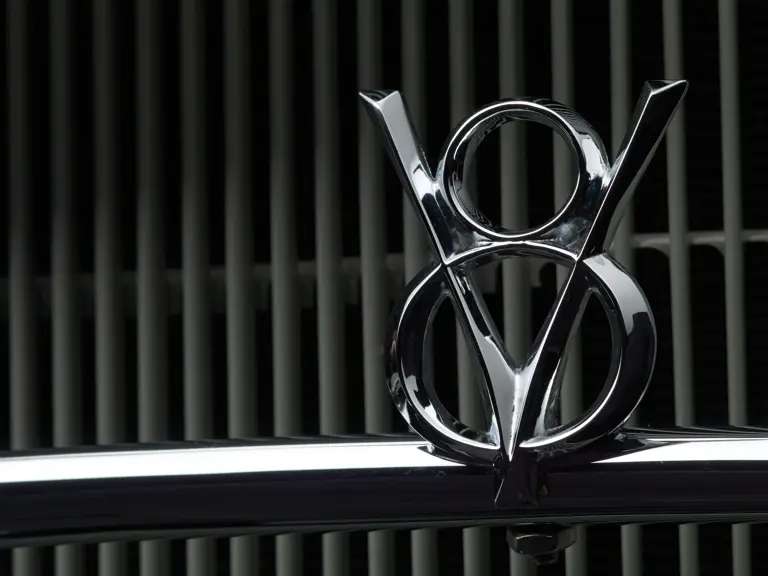
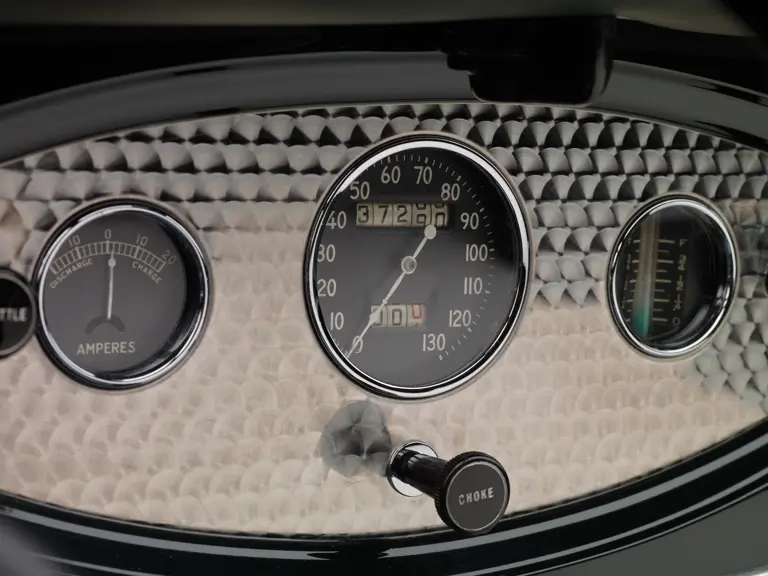
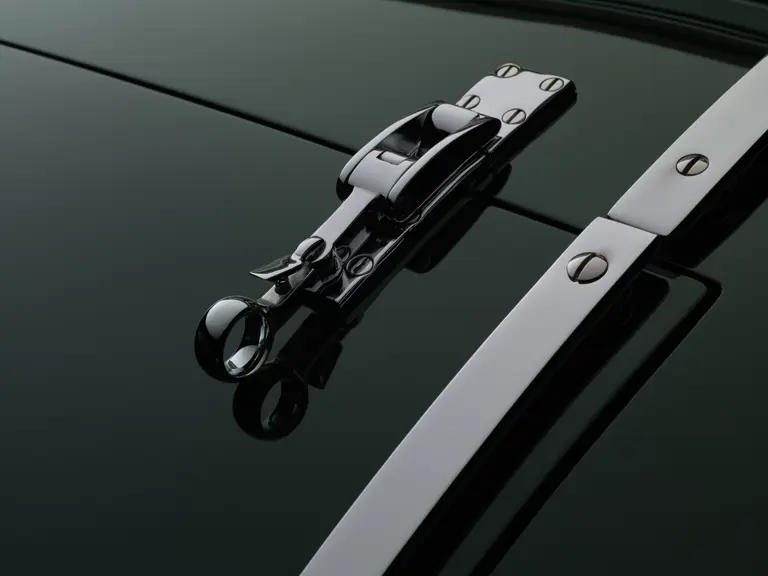

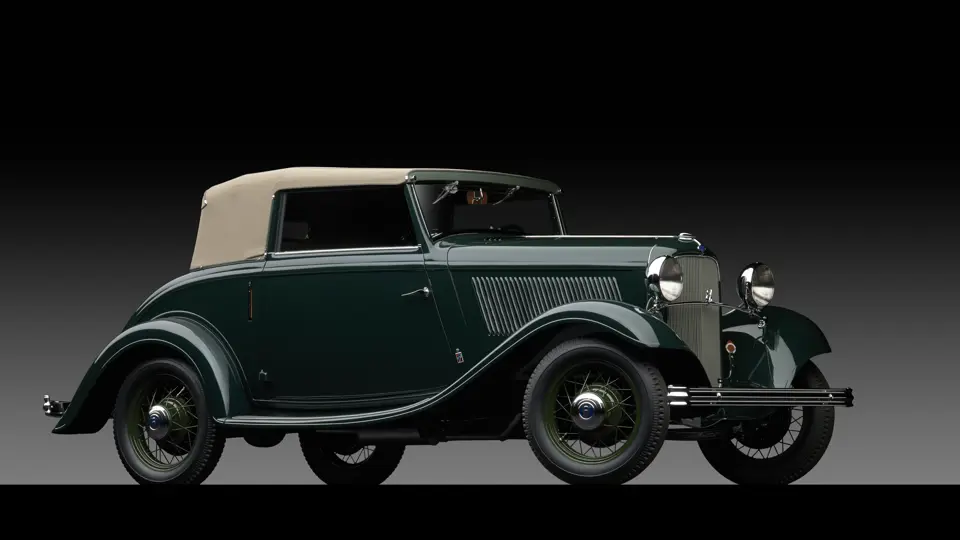
 | New York, New York
| New York, New York
